Best Thelonious Monk Pieces: 20 Jazz Classics
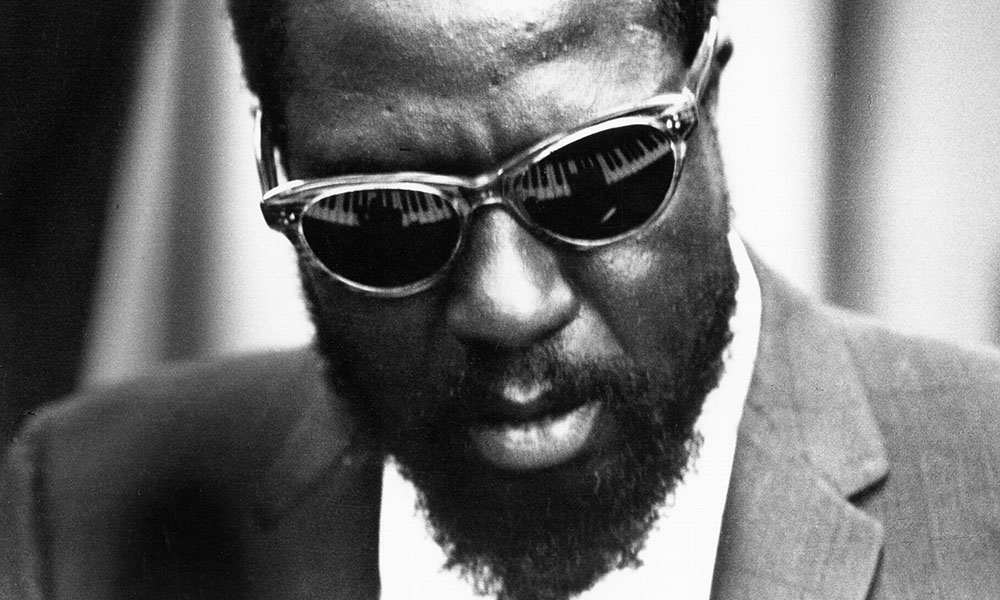
Born in Rocky Mount, North Carolina, Thelonious Monk is undoubtedly one of the most important – and controversial – figures in the history of jazz. Although he was a trailblazer who pioneered a uniquely percussive approach to the piano and developed a peculiar musical language that some found difficult to understand, his greatest achievement was writing over 70 memorable songs, several of which became jazz standards.
Monk initially rose to fame alongside alto saxophonist Charlie Parker and trumpeter Dizzy Gillespie in the vanguard of the bebop movement in New York during the mid 1940s. In the main, bebop was a high-octane music driven by Parker and Gillespie’s virtuosic athleticism but Monk, who was the eldest of bop’s holy trinity, created his own distinctive musical universe that was defined by quirky chromatic choruses, disquieting dissonant notes, and, on the whole, much slower tempi. Given the radical yet highly stylized characteristics of his music – which he blueprinted on his very first recordings for the Blue Note label in 1947 – Monk met with more opposition from the jazz establishment than Parker and Gillespie. “He can’t play. He has two left hands,” was how one New York record store owner responded to Monk’s piano playing. Blue Note, however, hailed their protégé as a genius and helped garner media attention by promoting him as a mysterious maverick.
Although the label’s attempts to break Monk into the jazz mainstream failed, as the 50s progressed, fruitful stints at the Prestige and Riverside labels established the pianist as one of modern jazz’s major figures; and in 1962, when Monk signed to the major label, Columbia Records, he enjoyed the biggest exposure of his career.
For those listening to Monk for the first time, finding a convenient entry point into his music can pose a challenge; especially in view of the fact that during his 24-year recording career he made multiple studio recordings of most of his signature compositions. But the 20 selections highlighted below offer the perfect introduction to a genius of modern music.
Listen to the best of Thelonious Monk on Apple Music and Spotify.
Blue Note Foundations
(Round Midnight; Ruby, My Dear; Well, You Needn’t; Epistrophy; Criss Cross; Straight, No Chaser)
Thelonious Monk spent five years with Blue Note (1947-1952) and though it was a creatively fertile period that yielded fifteen 78 rpm singles and two LPs, none of his recordings sold well. But Alfred Lion’s label was where Monk laid the foundations for his singular style and recorded many of his most important songs; including arguably his greatest and most popular creation, “Round Midnight,” a slow, evocative nocturne distinguished by a smoky uncoiling melody. Monk first recorded the song with a sextet in 1947 as “‘Round About Midnight” and since then, it has been covered by everyone from Miles Davis in the 50s to Amy Winehouse in the 2000s. It even has the distinction of being the most recorded jazz composition of all time and had a movie named after it; director Bernard Tavernier’s 1986 film about an American jazz musician (played by Dexter Gordon) living in Europe.
“Round Midnight” showed that Monk was an exceptional ballad writer but it wasn’t a one-off, as the exquisite “Ruby, My Dear,” clearly demonstrated. Monk’s 1947 trio version opens with a descending whole tone cascade; a signature embellishment in the pianist’s box of musical tricks.
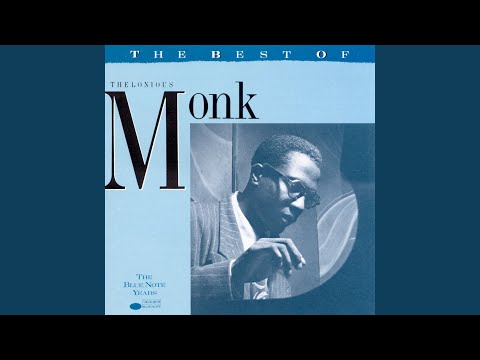
Click to load video
Monk could also produce songs that swung with a compulsive foot-tapping groove. The 1947 recording of “Well, You Needn’t” underlines his ethos of making a song swing joyfully while its infectious melodic hook shows that despite his reputation as an avant-garde iconoclast, Monk could write accessible tunes.
Another early Monk masterpiece, “Epistrophy,” co-written with bebop drummer, Kenny Clarke, was first recorded in 1948 with a band featuring future Modern Jazz Quartet vibraphonist Milt Jackson and soon became a go-to song in Monk’s canon.
“Criss Cross” from 1951, also swung hard, due to drummer Art Blakey’s propulsive groove; the song highlighted Monk’s penchant for angular melodies and seasoning his harmonies with discordant notes. First recorded the same year, “Straight, No Chaser” – another quintessential Monk number that the pianist frequently revisited – showed how an orthodox 12-bar blues could be radicalized with mesmerizing chromatic melodies.
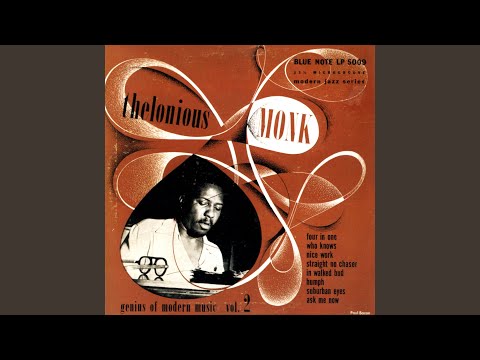
Click to load video
Blossoming At Prestige And Riverside
(Blue Monk; Nutty; Pannonica; Ba-lue Bolivar Ba-lues-Are; Trinkle Tinkle; Rhythm-A-Ning)
Like “Straight No Chaser,” “Blue Monk” – first recorded on the 1954 Prestige LP Thelonious Monk Trio – dazzled with its complex prismatic architecture but was built on a relatively simple 12-bar blues framework. It was second only to “Round Midnight” in terms of the number of versions Monk recorded.
Another popular tune in Monk’s repertoire was the even catchier “Nutty,” initially cut in 1954 with a trio for the Prestige album, Thelonious Monk Plays. Its piano solo, which adheres closely to the song’s melodic theme, reveals how Monk was different from technically dazzling bebop pianists like Bud Powell; instead of producing a torrent of liquid piano runs, his improvisation is highly fragmented, with long pauses separating percussive right-hand melodies from chunky chordal iterations of the theme.
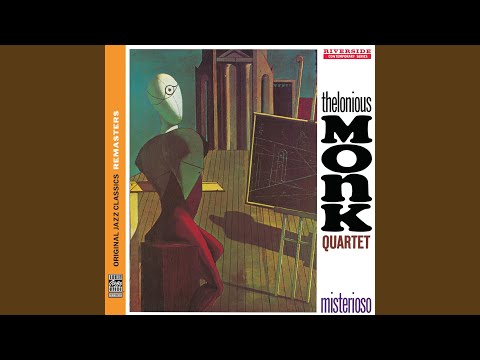
Click to load video
In 1955, Monk joined producer Orrin Keepnews’ Riverside label to begin the most satisfying phase of his career. Arguably the highpoint of his time there was the 1956 album, Brilliant Corners, featuring saxophonists Sonny Rollins and Ernie Henry, bassist Oscar Pettiford, and drummer Max Roach. The record saw the premiere of Monk’s beautiful ballad “Pannonica”; Monk played celeste as well as piano on a dreamy tune inspired by his friend and patron, the Baroness Pannonica “Nica” de Koenigswater. She was also the muse behind another lovely slow ballad on the album; “Ba-lue Bolivar Ba-lues-Are” (aka “Bolivar Blues”), whose title referenced Manhattan’s Bolivar Hotel, Nica’s home at the time.
A year later, in 1957, sax giant, John Coltrane, joined Monk’s group for a short period; they only made one studio album together (Thelonious Monk With John Coltrane) but as the quirky, intricate “Trinkle Tinkle” shows, the two jazz giants created musical alchemy when they combined their formidable talents.
Monk’s penchant for technically-gifted saxophonists resulted in the highly regarded tenor titan, Johnny Griffin, joining his quartet in 1958. They were captured live at the Five Spot Café in New York on two compilation albums, Thelonious in Action and Misterioso. Thelonious in Action features an incendiary version of Monk’s classic “Rhythm-A-Ning,” a driving tune the pianist first recorded in the studio in 1957 with Art Blakey & The Jazz Messengers.
Thelonious Monk’s Solo Monk Piano Excursions
(April In Paris; Just a Gigolo; Lulu’s Back In Town; Sophisticated Lady)
Thelonious Monk cut four albums of unaccompanied piano during his career, beginning in 1954 with Piano Solo, recorded in Paris as a one-off project for a French company. But one of his most famous solo forays was Thelonious Himself, recorded three years later, which blended self-penned material with jazz standards. Monk’s version of the ballad “April In Paris” from that album is particularly arresting; the way he serrated the melody and re-harmonized it revealed how he applied his signature musical characteristics to someone else’s creation. Noteworthy, too, is his 1963 solo piano rendering of the popular 1920s Austrian tango, “Just A Gigolo,” a song that jazz pianists Fats Waller and Art Tatum reworked first, but which Monk completely transforms to reflect his own musical psyche.
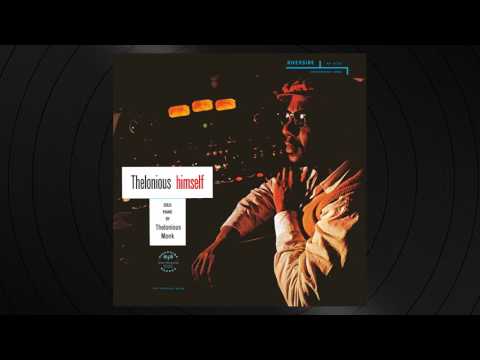
Click to load video
There were other lone piano recordings where Monk clearly indicated how he fused the highly rhythmic stride-style popularized by Harlem musicians like James P. Johnson in the 1920s with an altogether more modern conception of melody, harmony, and meter; a good example is provided by the jaunty piano intro to his 1964 rendition of the 1930s tune, “Lulu’s Back In Town,” which is peppered with grating yet almost humorous harmonic clashes.
Although Monk is one of the greatest composers in the history of jazz, as the above two songs reveal, he was also an adept interpreter of jazz standards. He recorded two albums devoted to other writers’ songs; one of them, recorded in 1955, paid homage to the music of Duke Ellington and included a typical Monk-esque remodelling of the evergreen ballad “Sophisticated Lady.”
Wider Fame In The 60s
(Evidence; Bye-Ya; Green Chimneys; Ugly Beauty)
Thelonious Monk’s signing to Columbia Records in 1962, where he joined a roster including jazz heavyweights Miles Davis, Dave Brubeck, and Duke Ellington, meant that his music could reach more people than ever before. He was able to travel the world and perform on its greatest stages, and in 1964, proof that Monk was no longer an underground figure was confirmed when his portrait graced the front cover of the influential US magazine, Time.
But the 60s was a period of consolidation for the pianist/composer, who mainly offered refreshed versions of older songs; some were revived in a large ensemble context, like the thrilling big band retoolings of the uptempo numbers, “Evidence” and “Bye-Ya,” both recorded on tour in 1963. Of the new songs Monk debuted in the 60s, “Green Chimneys,” an upbeat swinger, and “Ugly Beauty,” a mournful but elegant waltz, showed that the composer could still write compelling music. Even so, as the 60s became the 70s, his creative powers rapidly declined with the progression of undiagnosed bipolar disorder.
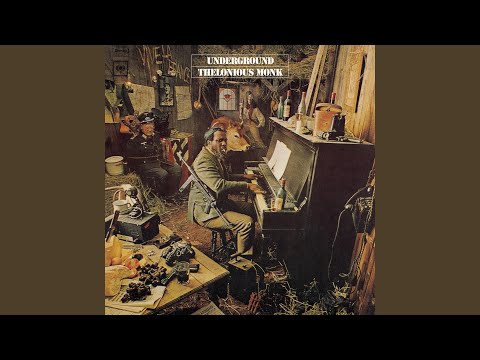
Click to load video
Thelonious Monk died in February 1982, 11 years after his final studio recording, but since then, his stock has risen exponentially; in 1993 he won a Grammy Lifetime Achievement Award and two years later, his face appeared on a US postage stamp. More accolades followed; the Thelonious Monk Institute Of Jazz was founded in Los Angeles in 1986 and exactly two decades later, Monk was awarded a posthumous Pulitzer Prize. His name has also been kept in the public eye with a plethora of reissues, retrospectives, tribute albums, and unreleased live recordings; the latter epitomized by 2020’s critically acclaimed Palo Alto, capturing Monk’s band playing at a high school in 1968.
With their angular melodies and harmonic surprises, these Thelonious Monk pieces capture the idiosyncratic essence of their creator, a musical genius who was often misunderstood in his lifetime. Though Monk recorded most of those selections multiple times, he never played them the same way twice; a fact that’s not only indicative of jazz’s improvisational nature but also reflects the pianist’s forthright individualism, whose sartorial panache and penchant for natty headgear was almost as famous as his groundbreaking music.
If you feel we’ve missed one of the best Thelonious Monk pieces, let us know in the comments section below.



